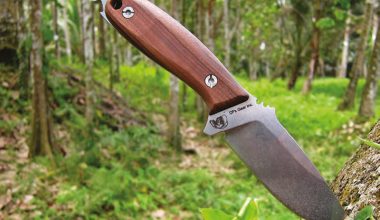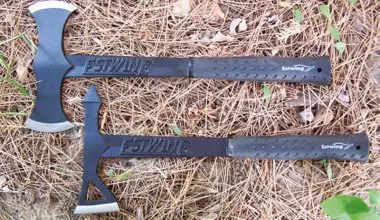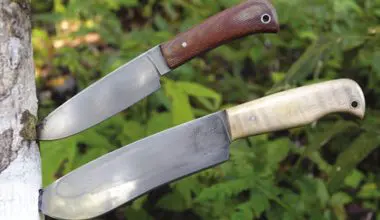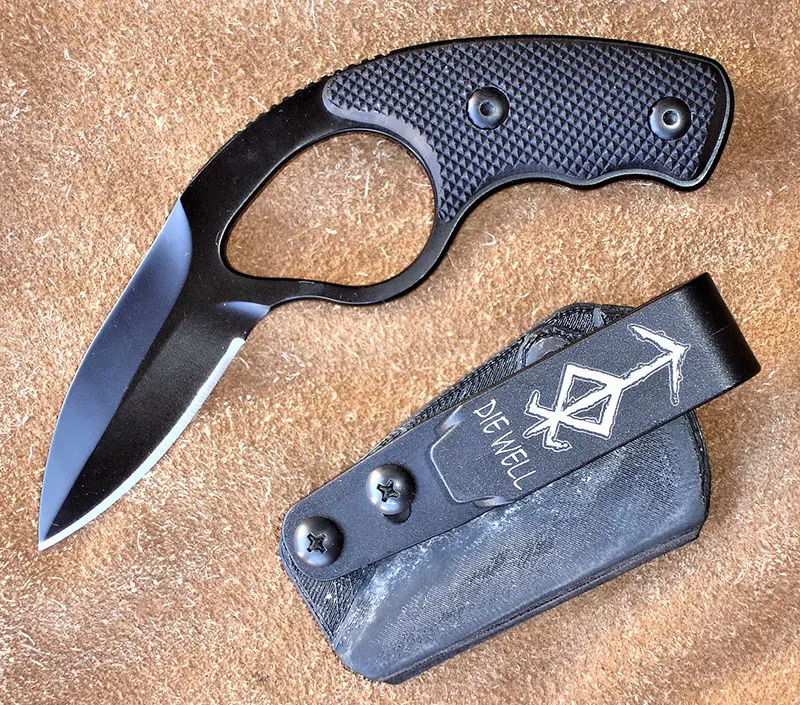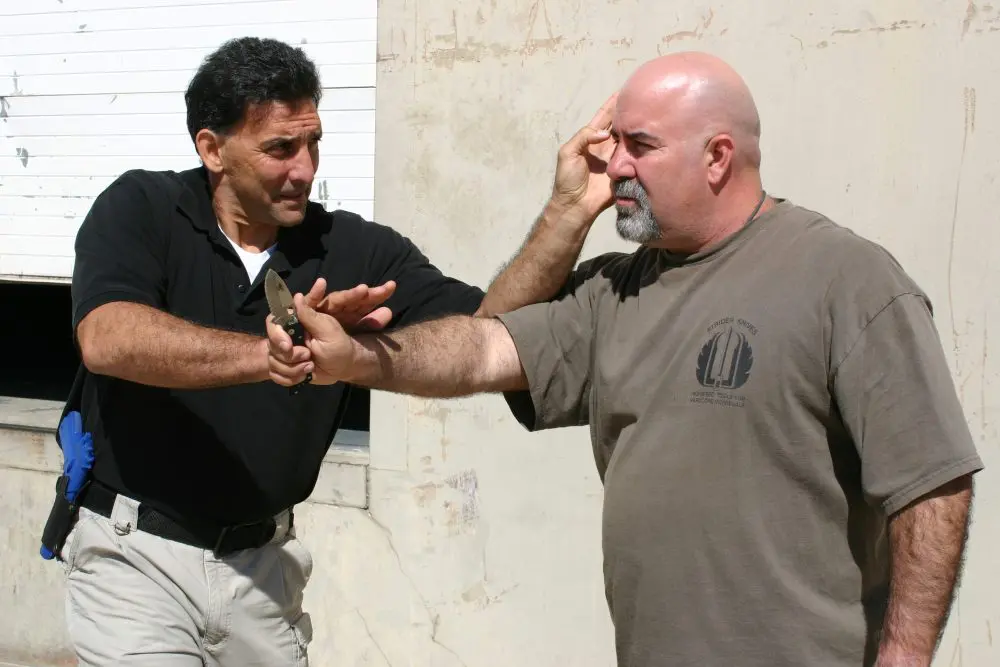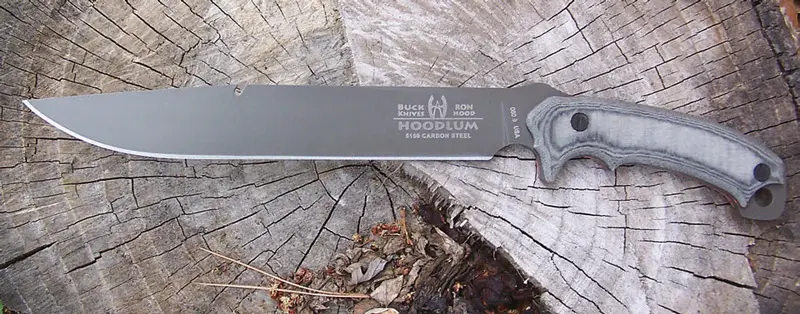
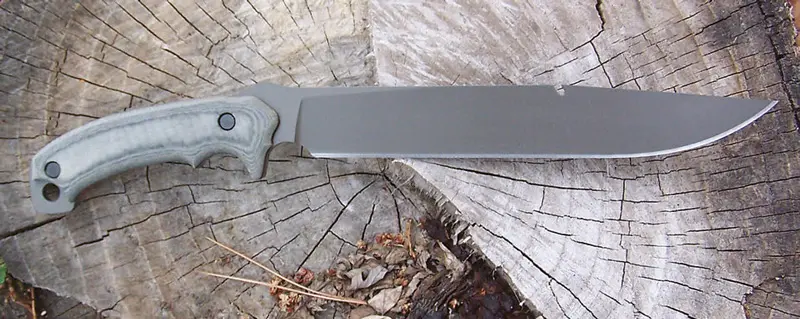
IF you ranked all your wilderness survival tools and gadgets by their usefulness, a big knife would most likely top the list. A potential chart-topper is the Buck Knives Hoodlum.
With some diplomatic designing, Ron Hood combined the individual functions of several blades in one hard-use knife. Originally produced by TOPS Knives, the Hoodlum is now a collaboration among Idaho neighbors TOPS, Hood, and Buck.
The Hoodlum is not alone in addressing the idea of a single big knife that will slash and hash, slice and dice, chop, cleave and split. Such multi-tasking was a hallmark of early Bowies. Blade users today can select from several designs emphasizing capabilities most personally useful. The Hoodlum’s configuration represents an optimal combination of useful features and strengths.
Good tools result from design moxie and user-level understanding being under one hat. Typical of this are knives by Ron Hood, the practicing dean of American survival gurus until his untimely passing. Hood was a knowledgeable and experienced teacher whose years in the field led him to thoughtfully design tools to do jobs he knew were necessary. He was not a merchandised “expert” who licensed his name to sell gimmicks.
The specific jobs knowledgeable men perceive as necessary, and how they accomplish them, vary. So do their tool designs. Hood’s understanding of in-the-dirt practicalities for wilderness survival makes his tools worth consideration.
Survival tools start with a knife. The Hoodlum is purposebuilt for, but not limited to, survival uses. When I say “survival,” I mean being on your own in the wilderness, coming back in good shape, and bringing any tenderfoot friends with you (as opposed to cowering behind a mountain of freezedried groceries with an AR and a sack of ammo hoping for the chance to protect it from zombies).
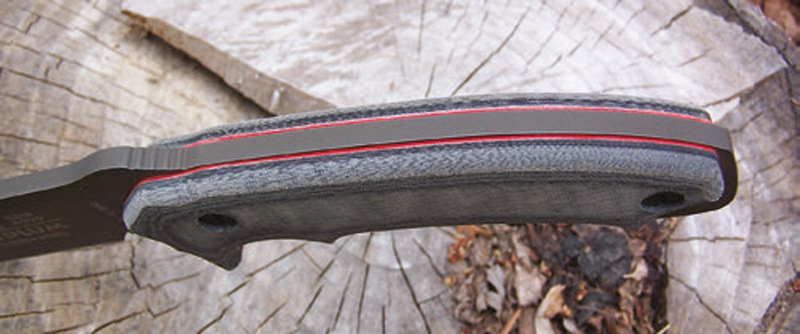
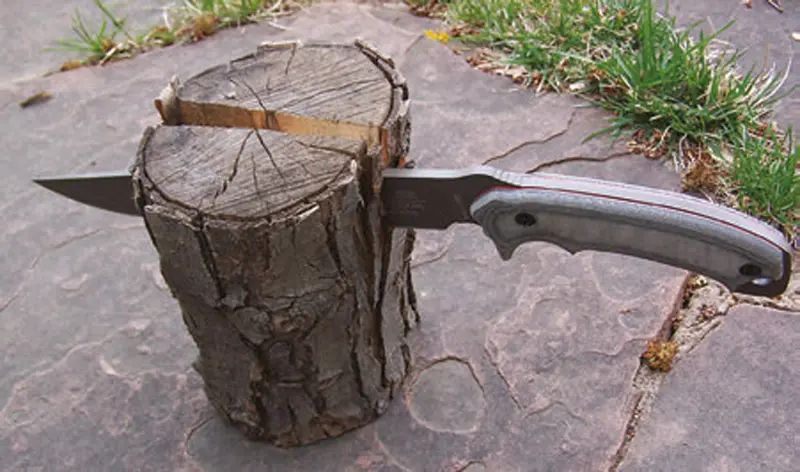
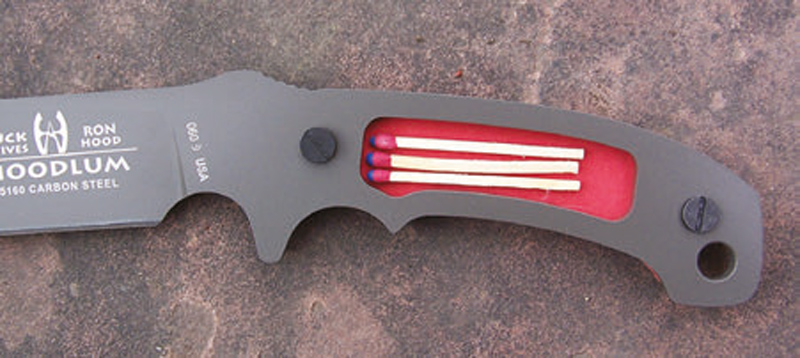
Except for the ubiquitous fencing tool, few multi-function tools work better than individual tools, as there must be tradeoffs to put them in one envelope. The Hoodlum is a big, capable knife suitable for most small, medium and large knife functions and uncompromised by gimmicks. As such, it makes a great survival knife.
It works as a kitchen blade, maybe not as handy as a paring knife, but try digging cattail and camas roots in the mud with a paring knife. (Incidentally, for peeling small veggies with a big knife, try the technique of holding/mounting the knife and moving the veggie.)
For a belt-size knife, it chops as well as anything but a kukri and weighs considerably less. If you plan to build cabins, bring an axe. Or build hogans, done forever without knife or axe. (Incidentally #2: To maximize knife wood-chopping efficiency, use two hands, one over the other, for power and control. Don’t rapidly flail the blade like you’re mad at it.)
For its length, the Hoodlum works as a machete, although for clearing trail, not really a survival task, a long Collins would be better. In a survival scenario, you get where you’re going by swinging your feet, not a machete.
On your own in the woods, you’re likely to harvest more bedding and thatch than cordwood. (Incidentally #3: For fire building, the best way to make fuzz sticks with any knife is to hold the blade by the back in both hands and use it as a draw knife. Chopping makes chips, and you want slivers.)
With a long, straight clip forward of the notch, the Hoodlum blade is pointy. To protect the point when digging, use the knife to cut a digging stick, then dig with the stick.
There are no serrations, saw teeth or much else your grandpa wouldn’t recognize except Micarta handles and olive-drab powder coating. The Hoodlum’s 5160 carbon steel is hardened to 57-59, about right for an obtuse edge on a heavy blade that will see chopping duty. The grey linen Micarta handles are well shaped for the hand, a good choice for a blade that might be used for hours at a stretch.
I like Buck’s heavily textured G-10 grips on must-not-drop emergency knives, but they’d eat you up on extended hard duty like the Hoodlum could see. If the grips proved slippery to you in mud and blood, consider judicious use of a Swiss checkering file here and there.
There are both a finger notch and choil, handy for control on delicate work. I probably wouldn’t use the choil during heavy work. Atop the blade is a notch for lifting pots, bending/breaking wire, or scoring bone to access marrow. You could also cut a forked stick to lift pots rather than risk dropping a finely tempered polymer-coated blade in hot coals. This is a blade that will take a lot of abuse, but it should never be on purpose.
The grips are removable, revealing a cavity in the tang comprising a “shock mitigation system” designed to capture resonance within the handle, dampening shock. With oblique whacks on bone-hard dead aspen, it seemed to work. It’s also a stash point for survival supplies. The butt of the full-tang blade is formed for hammering, with lanyard hole.
The black nylon MOLLE sheath includes an outside pocket for a stone, multi-tool, or whatever you want for your belt or go-pack. Carry weight is 22 ounces, the knife 14.6 ounces.
As a blade for all seasons, the 0.220-inch thick, ten-inch straight-clip flat-ground blade works for me.
Building a log house? Bring an axe. Cleaning a seine of fish at once? Bring a filet knife. Dressing veggies for canning? Bring a paring knife. Spilling the blood of food or assailants? Bring a gun. Harvesting wagons of fibrous food or shelter? Bring a sickle.
But to do all the above in varying amounts with only the knife you carry, I don’t think you’ll go wrong by bringing a Hoodlum.
